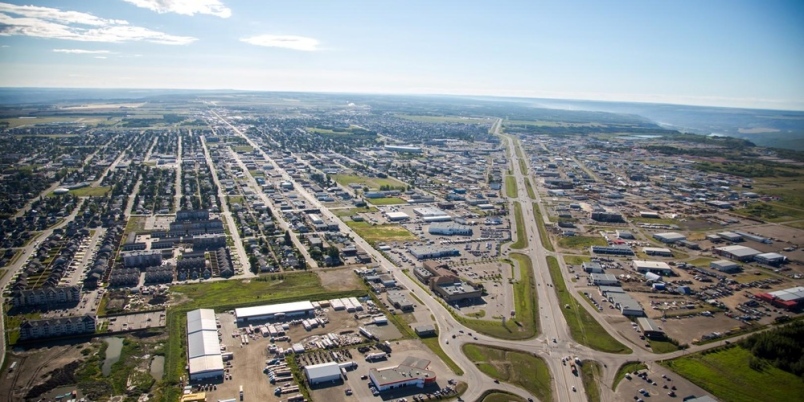Are Oil and Natural Gas Transforming Fort St. John Economically?

The city of Fort St. John works continuously to promote economic development projects in the area by working with the Northern Peach Economic Development Commission.
The city has diversified into economic development in natural gas, oil, and hydroelectric projects. The latest and largest project is being developed by BC Hydro (Site C Dam).
Construction of the Site C dam should increase provincial gross domestic product (GDP) by $ 3.2 billion, including a $ 130 million increase in regional GDP during construction. “The energetic city ‘Fort St. John is experiencing unprecedented economic growth due to the development of North East British Columbia’s abundance of natural resources.
These resources include hydro-electric power from the Peace River through the construction of the Site C Dam, which is currently under construction. Site C Dam is the largest construction project in the history of British Columbia, Canada estimated at 9 billion. The region also contains the world’s largest natural gas reserves, known as the Monteney Basin.
The Fort St. John city is located only a few minutes away from Site C Dam project and is strategically located in the middle of the Montney basin, making Fort St. John the epi-center of the exciting new Liquefied Natural Gas (LNG) industry.
All major Liquefied Natural Gas based industries, including Shell and facilities, have established headquarters in Fort St. John city in anticipation of several years of active drilling in the area. According to the government, the expenditure on the LNG industry will exceed 100 billion if two LNG facilities are built. The Economic Fundamentals for FSJ Real Estate are higher than the Economic Fundamentals of Fort McMurray prior to the second-large station of Oil Sands.
There are some traditional or “easy oil” deposits in the northeast of the province next to Alberta in British Columbia, but these will soon dry up. There are other oil deposits circulating in the sedimentary valleys of the province, and especially in the vicinity of Haida Gawai, but oil drilling has not yet begun elsewhere in the province.
For now the province’s oil industry is using new technologies to get into the already inaccessible supply of oil that resides in the Northeast. In addition to the construction of an LNG export terminal, the project also includes the construction of a 670 km pipeline to deliver natural gas from the Northeast to Kitimat. Together, those projects would go directly to British Columbia economy employing over 7,000 people during the construction phase.
Once commissioned, the LNG Canada facility will open new markets for northern BC’s natural gas reserves and the U.S. Will reduce Canada’s dependence on the market. The LNG Canada facility is expected to export an estimated 14 million tonnes of liquid natural gas per year, which should require further demand for expansion.
Apart from Site C Dam and the new LNG industry, North East BC’s economy is one of the strongest agricultural industries in the country. There is also mining and forestry which includes the world’s second-largest Oriented Strand Board mill. This strong industry base makes North East BC and Fort St. John an economic engine that has driven the province of British Columbia to become the nation’s strongest economy.







